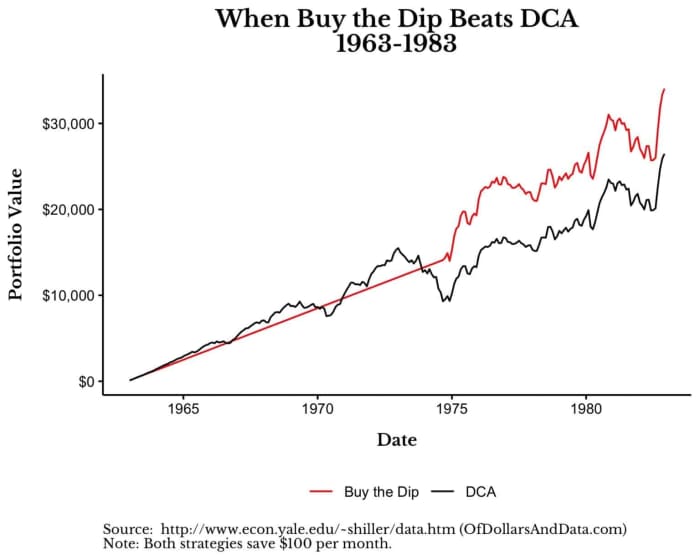It looks like you're new here. If you want to get involved, click one of these buttons!
Investors sometimes sell their best-performing stocks too soon and keep their poor-performing stocks too long.Very good discussion in this thread.
Over time, I have read about a lot of buying strategies. E.g., DCA, BTD, etc. But I have never read an exit strategy. I think this is a secret sauce people do not share. I hope folks in this forum share their exit strategies.
My definitions for market drawdowns - probably correspond to most people’s
0-5% diplet
5-10% dip
10-20% correction
>20% bear market
+/- a couple of decimals.
WSJ, Jan 23, 2021 A New Reason Investors Shouldn’t Try to Time the Stock MarketAlthough active investors tend to “chase stability”—they are trying to minimize volatility by market timing—they end up doing the exact opposite, according to the research, as they invest in stocks after past volatility is low and before future volatility is high. ... Such investors are chasing safe winners, but they’re actually getting risky losers.
WaPo, Sept 24, 2021: In the long run, slow and steady stock-buying easily beats trying to time market dips, experts sayBuying on dips doesn’t necessarily guarantee better returns.... While you wait for a downturn, you could be missing out on significant upturns in the stock market.
MarketWatch, May 23, 2017: Why a buy-the-dip stock-market strategy is inferior to buy-and-hold[I]nvesting only on the dips, which involves some market timing, returns far less than simply buying and holding, according to Samuel Lee, investment adviser at SVRN Asset Management. ... [I[t turns out the buy-the-dip strategy would earn a third of return of a buy-and-hold strategy with much higher volatility.

© 2015 Mutual Fund Observer. All rights reserved.
© 2015 Mutual Fund Observer. All rights reserved. Powered by Vanilla